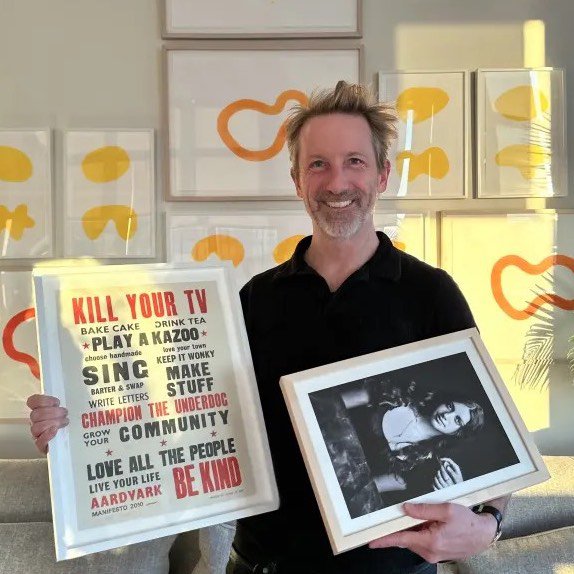Jane Mount, the artist behind the popular Ideal Bookshelf, talks childhood, artists who inspire her, and what's next after 800 bookshelf miniatures.

SF: How did you come up with Ideal Bookshelf?
JM: Back in 2007, I was painting in a big studio space in Manhattan, but I had to give it up because the owners decided to sell the building. So I started painting at home at our dining room table. I had been painting large scale figurative things in my studio, but the scale of my workspace had decreased, so I was looking for something small to experiment with. We had a bookcase in the room, so I started with that.
A friend came over, saw the paintings, and said he wanted to buy all four. I had never had someone react so viscerally to a painting of mine before.
For a while I would go to friend’s houses, take pictures of their bookshelves and then paint from those photos. But I decided to start asking people what their favorite books were. I thought that would be more interesting.
People really, really love their books. It has become quite fascinating seeing what they choose and how that reflects their personality.
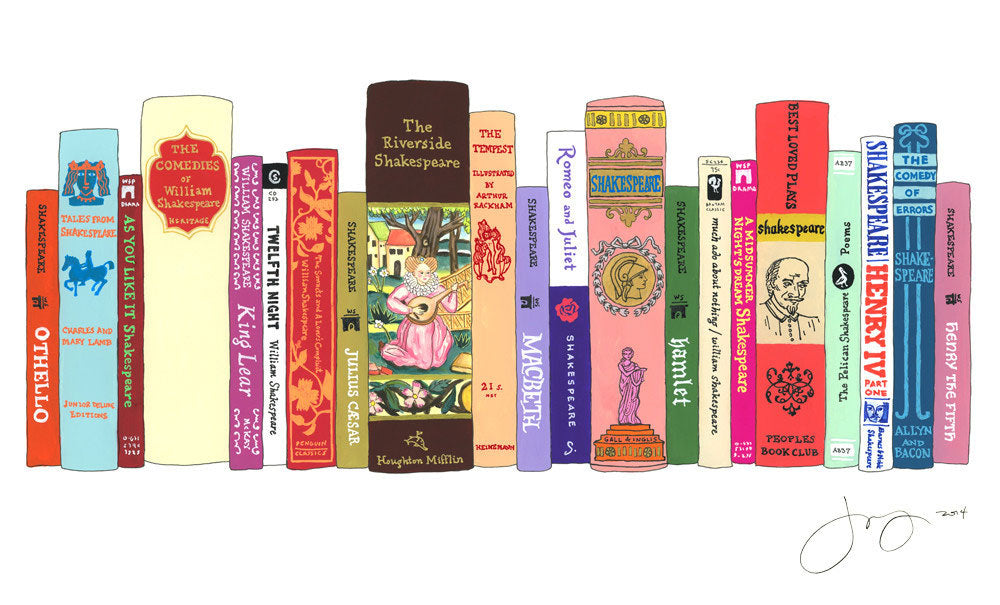
A new addition to Ideal Bookshelf: a Shakespeare collection released in August 2014.
SF: You mentioned that you were raised by an architect and and an interior designer. How did your parents’ careers influence your path?
JM: Anytime my family would go into any restaurant or new space, they were critiquing it. Everything we talked about was design and visually oriented. This sensitivity becomes part of you from a very early age and that’s how your brain starts to work. A lot of it is nature, but its nurture too.
SF: Were books a big part of your upbringing?
JM: We had tons and tons of books in the house. My mom is a super fast reader—she can read six books in a day if she wanted to. It’s always something I’ve been around and knew that people valued very highly.
SF: What is the one book that has had the most impact on your life?
JM: It’s not a book, but if the house was burning down, the first thing I’d grab, other than my cats and my husband, would be my dad’s sketchbooks. He was an architect and taught at Georgia Tech. He went to Paris with his classes and we would often meet him there after his work was done. His sketches are so perfect and beautiful to me.
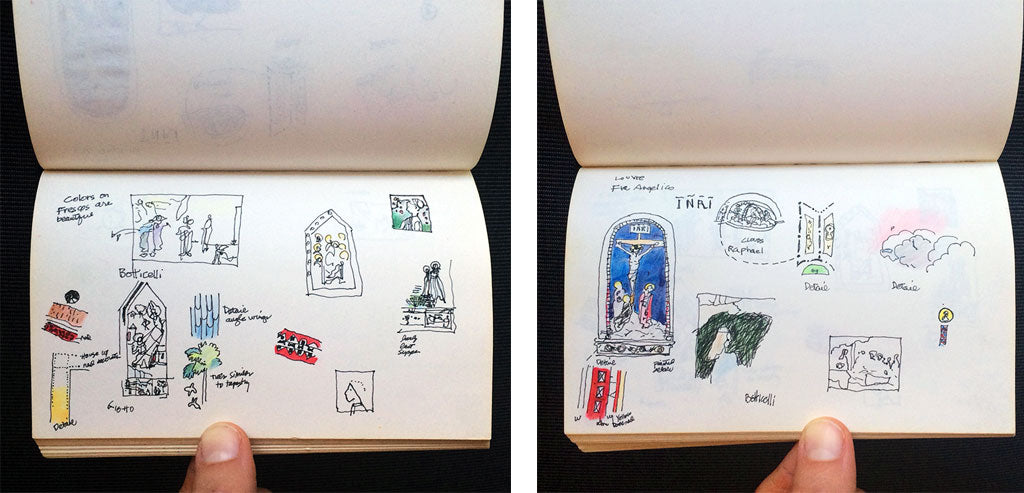
A couple of pages from Jane's father's Paris sketchbooks.
My favorite book of all time is The Phantom Tollbooth. I read it when I was 7 or 8. It’s about a kid who is bored all the time and a tollbooth mysteriously appears in his bedroom, and he drives through it into a whole new world. It’s about discovering the world on your own, and about never being bored.

SF: The idea of bookshelves as art has taken off thanks to you. What do you think is at the root of the Ideal Bookshelf's popularity?
JM: I think people are more nostalgic for physical books than ever, and I am grateful to Jeff Bezos for making my art more popular, for sure! But I didn't at all intend to paint pictures about books as strictly visual objects. Whether they're hardback or on a Kindle, it's what's inside a book that makes it important to someone. I think of the spines that I paint as a kind of code for a person, and the little pictures and words on them are just shorthand for a huge amount of knowledge, inspiration, and emotion. Ultimately, to me, an Ideal Bookshelf forms a portrait of what's inside instead of out.
SF: Many people choose not to commission their own ideal bookshelf and instead purchase paintings of other people’s favorite books. What is the appeal of hanging someone else’s ideal bookshelf on your wall?
JM: I think for a lot of people it's a visual collaborative filtering. You look at someone else’s bookshelf and you see books that you value as well. It makes you feel less alone in the world. It’s the realization that, "Hey! This person likes exactly the things I do." That’s a very nice feeling I think.
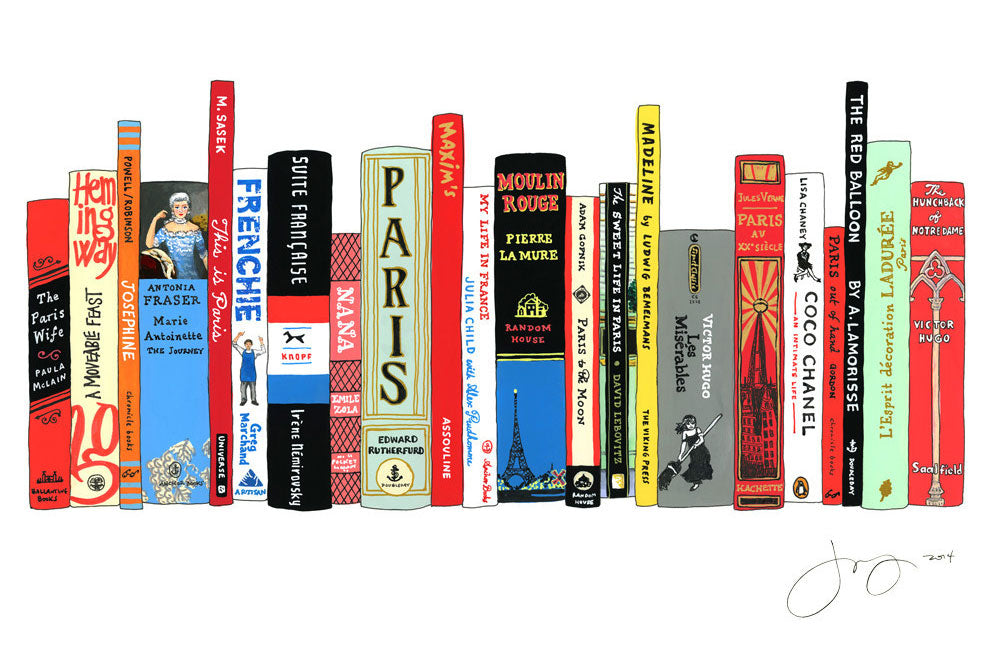
Another new addition to the bookshelf: a Paris collection, released in August 2014.
SF: What would you paint if you weren’t painting books?
JM: I like painting everyday things—things that are around people all the time. Most of the art that I like shows the emotion in the ordinary.
SF: What is the strangest bookshelf you’ve been asked to paint?
JM: Sometimes I’m asked to paint a set of books that are all about business—subjects like “how to succeed” and “how to get ahead.” When I think of books, I think of novels or fiction or things that help you to escape the world. But there are others who think of books and have something very different in mind. It’s part of what makes the Ideal Bookshelf interesting. And it’s helped introduce me to books that I wasn’t familiar with before.
SF: What's on your list to frame?
JM: I have a little painting by Howard Finster that’s probably my favorite piece of art. He’s an outsider artist from Georgia. I’ve had it since high school and I love it very much. The frame broke when we moved! I've also got a piece from Megan Whitmarsh that needs framing.
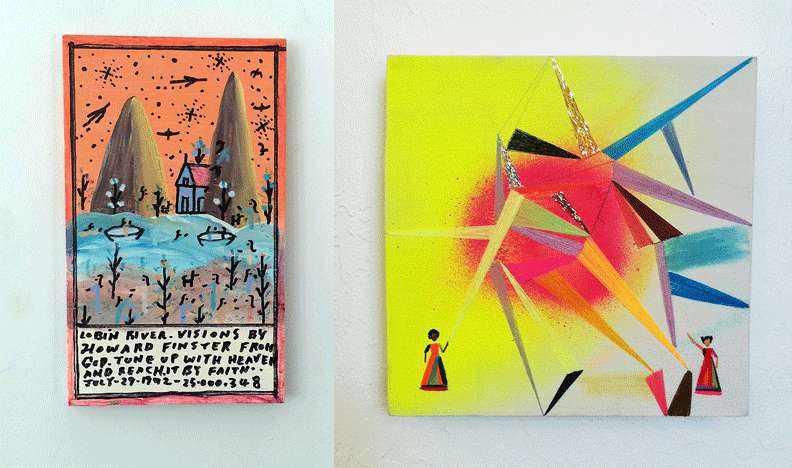
From left: Jane's Howard Finster and Megan Whitmarsh paintings, respectively.
SF: What artists are you inspired by right now?
JM: Two artists that always inspire me are Maira Kalman and David Hockney. I’m also really into Jason Polan. I love his work and have several of his pieces. He makes small, intimate drawings. The closer you look at them, the more attached you get.
SF: What’s next for you?
JM: You know, I’ve painted over 800 bookshelves. At some point I will probably get tired of painting books. I don’t think I have an answer yet for what comes next. Lately I’ve been painting larger, people-sized books. The change in scale has made it interesting.

